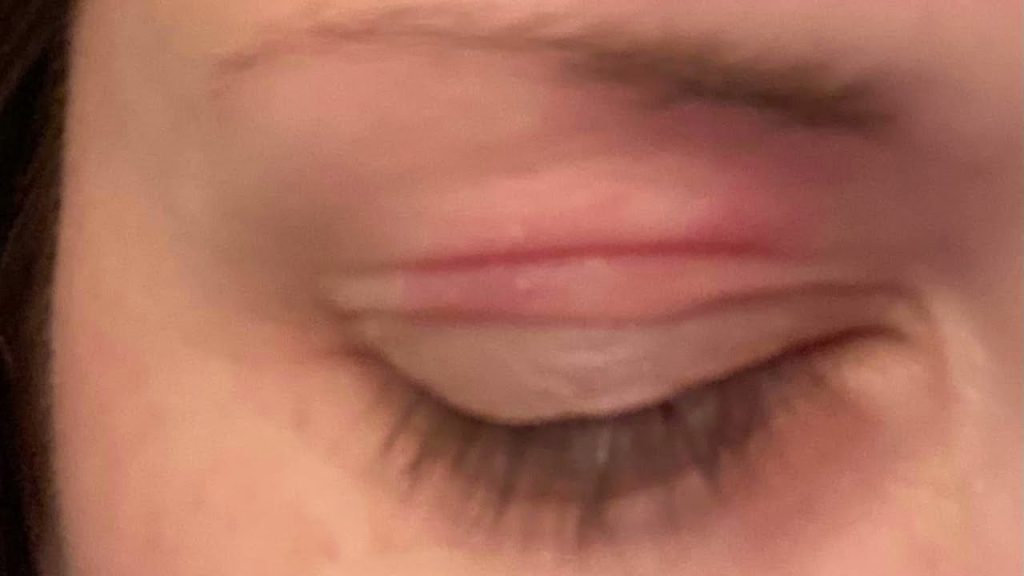Psoriasis is a condition characterized by inflammation that can affect the eyelids, this results in skin changes, irritation, and pain. To manage these symptoms and prevent flares, health professionals may recommend topical applications and medication. Psoriasis occurs when the immune system malfunctions, causing an overgrowth of skin cells that form plaques or patches on the body, including the eyelids. However, not all treatment options are suitable for use on the delicate skin of the eyelids.
Eyelid psoriasis is a non-contagious autoimmune skin condition that causes inflammation and the overproduction of skin cells, leading to the development of thick, scaly patches around the eyes. This condition can cause discomfort, swelling, and irritation in and around the eyes. Although the exact cause of eyelid psoriasis is unknown, genetics and immune system dysfunction are believed to be contributing factors. In addition to medications, there are several coping strategies and lifestyle choices that can help manage symptoms.
If you want more information about psoriasis in the eyelids continue reading because we have a whole article just for you.

Recognizing the Symptoms of Eyelid Psoriasis
When psoriasis affects the eye area, it can cause various symptoms, such as:
- Eye dryness, inflammation, discomfort, and possibly vision loss
- Difficulty opening and closing the eyes due to a buildup of skin patches
- Scaly, red growths in the affected area
- Dry, cracked skin that may bleed
- Eyelid inflammation that can cause eyelashes to rub against the eye (trichiasis)
- Dandruff-like scales that flake off and stick to the eyelashes
- Pain when moving, opening, or closing the eyelids
Psoriasis on or around the eyelids can be particularly challenging to manage since the skin in this area is very sensitive. Inflammation can lead to swelling, causing the eyelashes to rub against the eyeball. The rims of the eyes can also turn upward or downward, resulting in further irritation and complications. In rare cases, psoriasis can affect the eye, leading to inflammation, dryness, discomfort, and vision loss.
Causes of Eyelid Psoriasis
Factors that can trigger or worsen psoriasis symptoms include:
- Stress
- Illness, specifically throat infections (e.g., strep throat) and immune disorders (e.g., HIV)
- Skin injuries such as bug bites, sunburns and some vaccinations
- Weather, such as less sunlight and decreased humidity, which can also lead to drier heated air indoor
- Allergies, smoking, excess alcohol intake, certain foods and/or environmental factors
- Medications, such as beta blockers used to control high blood pressure or heart rate, or lithium used to treat bipolar disorder
In addition to immune system disorders, genetics can also play a role in psoriasis, even without any family history of the disease.

Eyelid Psoriasis: Treatment Options and Tips
Effective treatments are available to manage eyelid psoriasis symptoms. From steroid creams to biologic drugs, there are many options to consider.
If you experience irritation or dry skin on your eyelids and don’t have a history of psoriasis, try treating it at home with a low-dose, over-the-counter steroid cream. However, if the condition doesn’t improve within a few days or worsens, consult a dermatologist for a proper diagnosis.
When it comes to psoriasis treatment, it’s best to see a dermatologist. If eyelid psoriasis affects your vision, you will also need to see an ophthalmologist.
While powerful topical steroids can alleviate psoriasis on other parts of your body, they can be absorbed into your eyeball and cause vision problems when used on your eyelids. Instead, dermatologists may suggest mild steroid creams, calcineurin inhibitors like Protopic or Elidel, or other topical treatments to reduce inflammation and itch.
If psoriasis affects other parts of your body or negatively impacts your quality of life, your dermatologist may suggest systemic treatments such as biologic drugs or other disease-modifying agents.
To get the most out of your steroid treatment, place a cold compress on your eyelids for 10 minutes twice a day. This can help remove crusting and scales, allowing the steroid cream to penetrate and work more effectively.

Practical Lifestyle Tips to Manage Eyelid Psoriasis
Proper skin care, a healthy diet, and stress reduction can help manage eyelid psoriasis symptoms and improve your overall well-being.
Here are some lifestyle habits to consider:
- Practice good skin care: A gentle skin care routine can help prevent flares and minimize inflammation. Use hypoallergenic moisturizers and avoid rubbing or picking at the scales.
- Avoid eye makeup: Makeup can exacerbate redness and flakiness. Skip it when you have an active flare.
- Follow an anti-inflammatory diet: Eating plenty of fruits, vegetables, and seeds while cutting out white flour, white sugar, and dairy can help keep psoriasis flares at bay.
- Manage stress: Stress is a known trigger for psoriasis flares, so prioritize stress-reducing activities like exercise, meditation, and mindfulness practices.
It’s important to seek care from a dermatologist and an eye specialist if you have psoriasis on your eyelids. They can help control your symptoms and protect your vision.
Comparison of Psoriasis and Eczema
Psoriasis and eczema develop at different stages of life: psoriasis typically starts around age 15, while eczema can begin in childhood and persist into adulthood. Eczema is more prevalent, affecting over 31 million Americans according to the National Eczema Organization. Psoriasis symptoms involve red, scaly patches and pain while moving the eyelid, while eyelid eczema is usually very itchy with symptoms that include oozing or crusting, sensitive, dry eyelid skin, swelling, and inflamed, discolored skin patches. Different types of eczema can appear in different areas of the body, similar to psoriasis.
When to Seek Medical Attention
If you notice any changes in your vision or experience symptoms of eyelid psoriasis, it’s essential to consult an eye doctor. A dermatologist is also a good point of contact for assessing psoriasis symptoms and addressing any concerns about the condition.
Even if you have perfect vision, getting an annual eye exam is essential to detect early warning signs of certain conditions and safeguard your overall health.